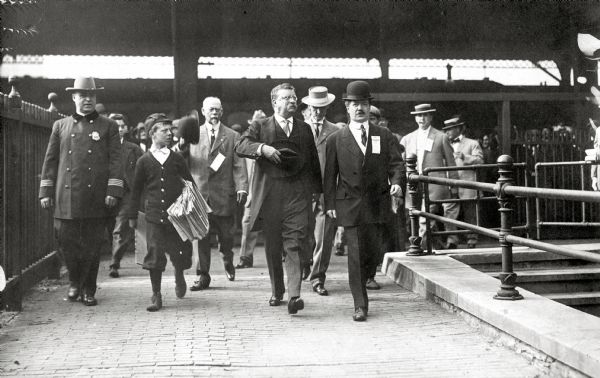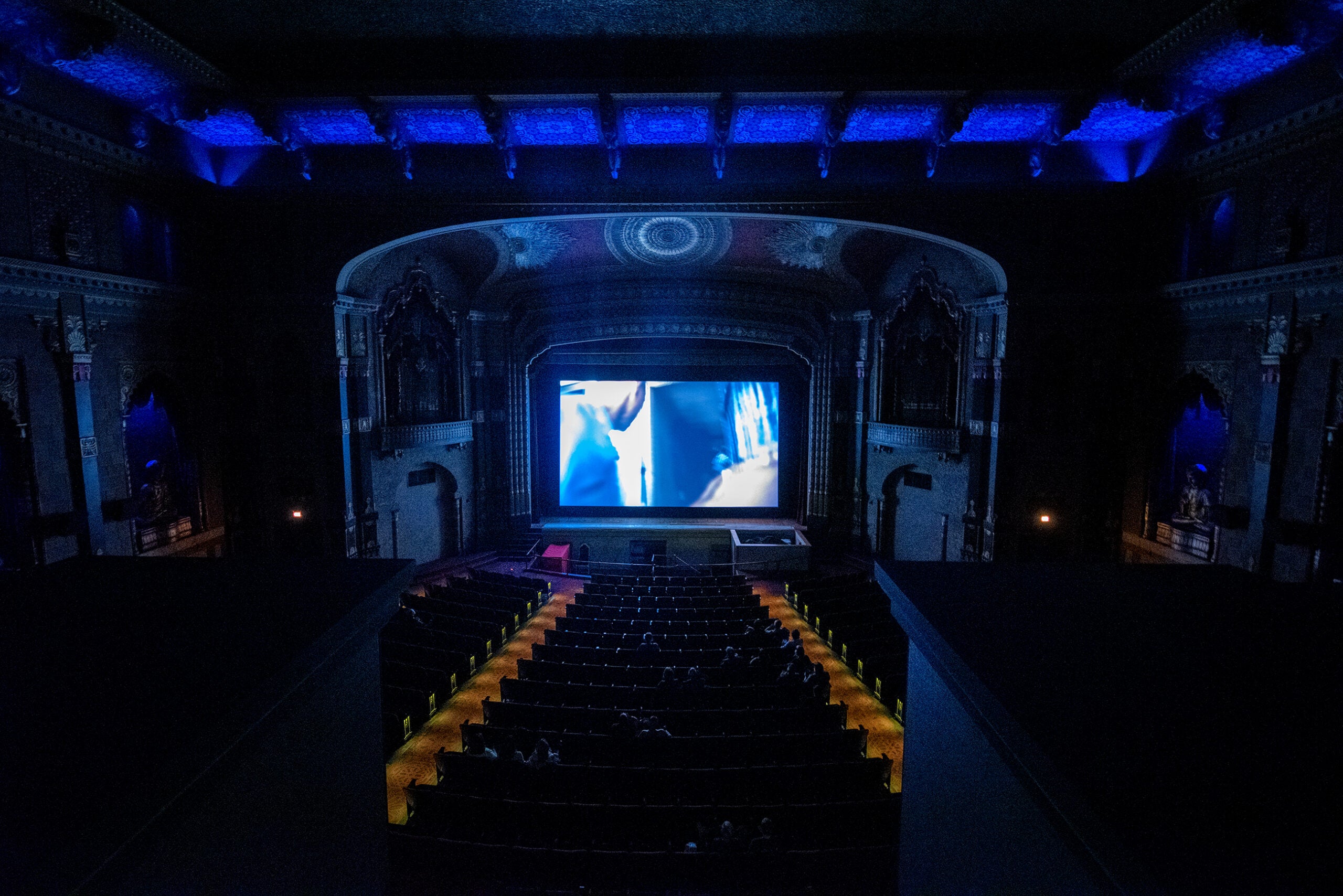On Oct. 14, 1912, presidential candidate Theodore Roosevelt, center above, arrived in Milwaukee for a campaign event. The day would end with an attempt on his life by would-be assassin John Schrank.
Roosevelt had already served two terms as president but was seeking office again as head of the new, independent Progressive Party (much to the chagrin of rival — and Wisconsinite — Bob La Follette) that had split from the Republicans. Not everyone was so thrilled with his candidacy.
Schrank, a New York saloon keeper, had been following Roosevelt through eight states, lying in wait for his chance. The perfect shot seemed to appear as Roosevelt left Milwaukee’s Hotel Gilpatrick for an event at the Milwaukee Auditorium. Schrank fired his .38 and hit Roosevelt in the right side of his chest. The bullet lodged in his chest wall. Although he was bleeding through his shirt and coat, Roosevelt refused to miss his speaking engagement despite the pleas of his aides.
News with a little more humanity
WPR’s “Wisconsin Today” newsletter keeps you connected to the state you love without feeling overwhelmed. No paywall. No agenda. No corporate filter.
That speech likely saved Roosevelt’s life — literally. The thick, folded manuscript and the metal case for his glasses were in his coat pocket and absorbed the force of the bullet. Roosevelt even made the bullet a rallying cry of his speech, opening his vest to reveal the blood and declaring at one point, “it takes more than one bullet to kill a Bull Moose.”
Roosevelt dropped pages of his speech as he spoke and people picked up the bullet-scarred pages as souvenirs.
He did survive but he spent the next week in the hospital and carried the bullet in his chest for the rest of his life.
Wisconsin Public Radio, © Copyright 2025, Board of Regents of the University of Wisconsin System and Wisconsin Educational Communications Board.





